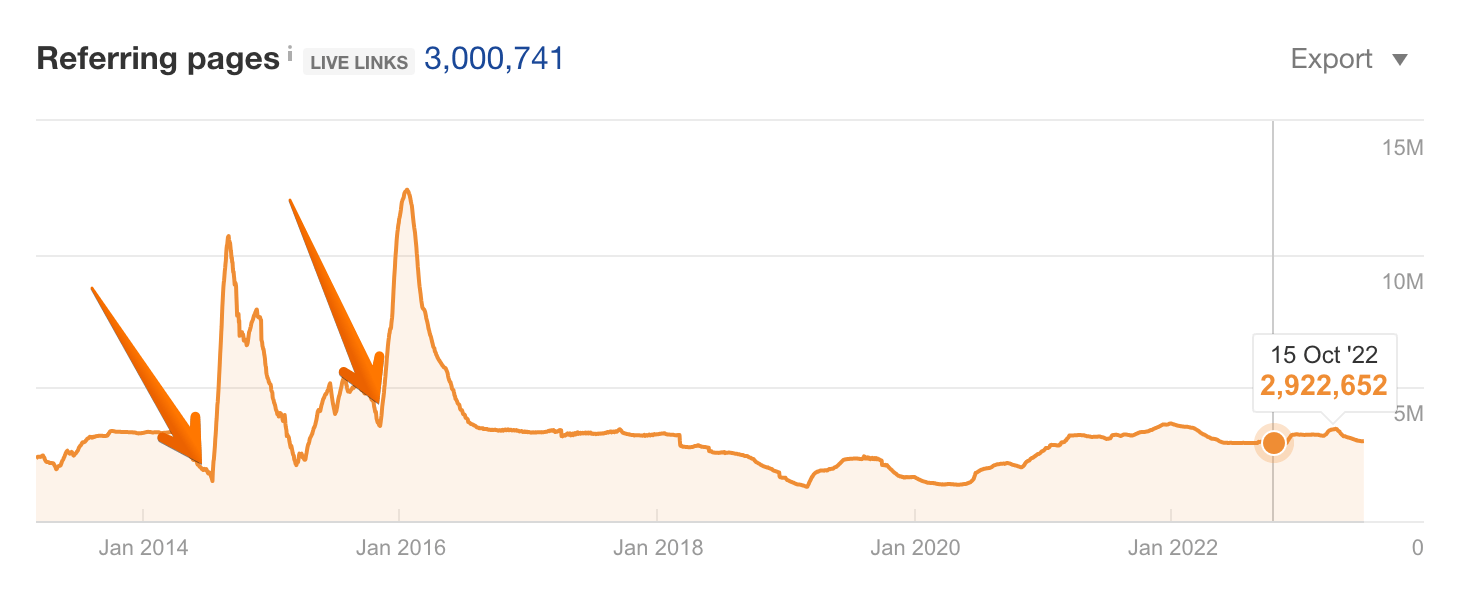Negative SEO
What is Negative SEO?
Negative SEO is the unethical practice of intentionally sabotaging a competitor’s search engine rankings. This is predominantly done using link spam to undermine a website’s authority in Google’s eyes.
Google representatives assert that it is safe to ignore negative SEO attacks because Google has the capacity to detect and disregard low-quality, spammy links. However, the SEO community remains skeptical about this.
Their skepticism primarily arises from Google’s demonstrated capacity to penalize webmasters for manipulative practices, as well as the observed success of some negative SEO campaigns.
Here’s an example of negative SEO services offered on one of the websites:

Why is it important to secure your website from negative SEO?
While search engines like Google have implemented measures to minimize the impact of negative SEO, this does not guarantee that your website is 100% protected.
Negative SEO can lead to the following consequences:
1. Drop in organic search traffic
The major component of negative SEO involves creating links to a competitor’s website that Google will view as link spam. The “punishment” for link spam is supposed to be the demotion of the website in the search results.
Additionally, by linking to the website with irrelevant, spammy anchor texts, attackers attempt to dilute the website’s topical relevance and even associate it with spammy search terms.
In the worst-case scenario, a penalty could be imposed on a website, leading to the website’s removal from the Google index.
On the bright side, negative SEO attacks are often overly aggressive and easy to distinguish from traditional link-building.
2. Damaged reputation
Another aspect of negative SEO relates to local search and reviews. An attacker may inundate your site or Google business profile with negative reviews.
This could harm your business’s reputation and negatively impact your local search rankings.
3. Hacked website
Hacking a website is fairly common in black-hat SEO. From a negative SEO perspective, if attackers gain access to your website (even temporarily), they could modify your robots.txt file, set pages to “noindex,” or inject links to spammy websites from yours.
Best practices to secure your website from negative SEO
Although negative SEO is rarely effective these days, it is important to secure your site in order to protect your online presence. Here are some best practices to save your site from negative SEO.
1. Audit your backlinks
Since the creation of low-quality backlinks pointing to your site is the primary method of negative SEO, you should consistently monitor your backlink profile. Be on the lookout for unexpected spikes in referring pages and irrelevant anchor texts.
For this purpose, you could use tools like Site Explorer or the free Ahrefs Webmaster Tools.

While Google is likely to ignore these links, you might want to disavow them just to be on the safe side.
2. Check the lost backlinks
Negative SEO can be quite inventive. Sometimes, instead of sending spam links to your site, attackers may send fake link removal requests to high-quality websites that link to you.
Setting up an alert for lost links in Ahrefs will help you stay updated on the status of your backlinks.
3. Secure your site
With all of the costly website hacks and data breaches in the news, it has become crucial to strengthen your website’s security. For that, here are a few things you can do:
- Keep a strong administrator’s password to prevent random attacks
- Use two-factor authentication (if & when available) to add another layer of security check
- Install security plugins to prevent spam attacks
- Set up an automatic backup system to safeguard your data
- Keep your software up-to-date
FAQs
Is negative SEO illegal?
While no law specifically regulates backlinks, in most cases, negative SEO is not considered illegal. However, hacking a website and stealing content can be legally pursued in many countries.
Is negative SEO effective today?
Given that Google purportedly devalues (ignores) link spam, negative SEO via links is generally ineffective today.
However, practices such as link injections, fake link removal requests, and content theft can still harm your website.